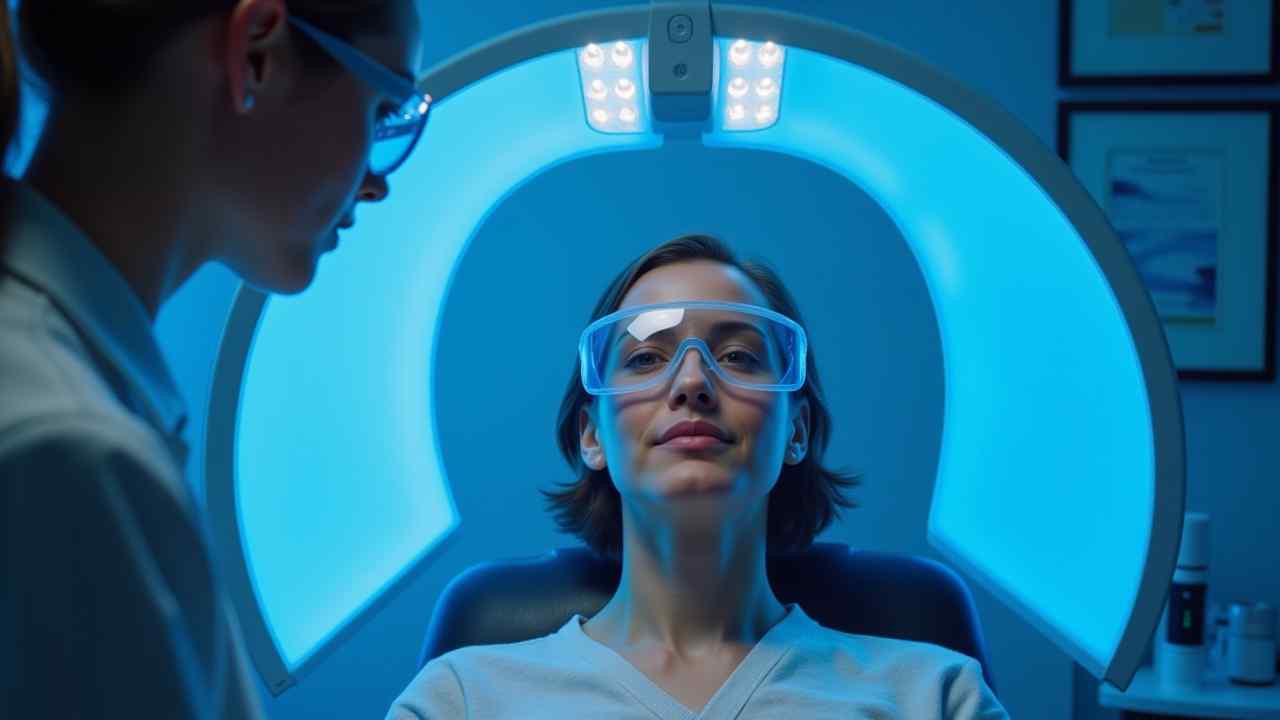
💡 Blue Light Therapy for Skin Cancer: A Dermatologist's Guide
💡 A Medical Guide to Blue Light Therapy for Pre-Skin Cancer 💡
❗ CRITICAL MEDICAL INFORMATION: Blue light therapy, or Photodynamic Therapy (PDT), is a medical procedure. It must be performed by a qualified dermatologist for a specific, diagnosed condition. It is NOT an at-home treatment and is not the same as the LED masks sold for cosmetic use. This guide is for informational purposes only.
You may have heard of blue light therapy for skin cancer. It is a powerful and effective treatment. However, it is important to understand what it is actually used for. It is not a treatment for all types of skin cancer. Its primary use is for treating pre-cancerous spots.
This guide will explain this advanced medical treatment. We will cover what it treats, how it works, and what you can expect. Let's shed some light on this important dermatological procedure. ✅
🤔 First, What Does Blue Light Therapy Actually Treat?
This is the most important distinction to make. When doctors talk about blue light therapy for skin cancer, they are almost always referring to its use for Actinic Keratosis (AK).
Actinic keratoses are rough, scaly patches on the skin. They are caused by years of sun exposure. They are considered pre-cancerous because, if left untreated, they can develop into a type of skin cancer called squamous cell carcinoma. Blue light therapy is an excellent way to treat an entire area of sun-damaged skin. It can clear both visible and invisible AKs.
It is also sometimes used for very superficial, early-stage non-melanoma skin cancers. It is NOT a treatment for melanoma or any invasive skin cancer.
- How Does the Treatment Work? (Photodynamic Therapy)
The medical term for this procedure is Photodynamic Therapy (PDT). It is a clever, two-step process that targets and destroys abnormal cells while leaving healthy cells unharmed.
Step 1: Application of a Photosensitizing Agent. Your dermatologist will first apply a special light-sensitizing medication to your skin. This is usually a cream or a liquid. You will then sit for one to three hours while this medication is absorbed. The abnormal, pre-cancerous cells absorb much more of this medication than your normal, healthy skin cells.
Step 2: Activation with the Blue Light. After the incubation period, you will sit in front of a special blue light source. The light is shone on the treatment area for a specific amount of time, usually around 15-20 minutes. The blue light activates the medication in the targeted cells. This creates a chemical reaction that destroys the abnormal cells.
- What Does the Procedure Feel Like?
During the blue light activation, most patients feel a sensation of tingling, stinging, or burning. Your doctor may use a cooling fan to help manage this discomfort. The sensation stops as soon as the light is turned off.
🩹 What is the Recovery Process Like?
The recovery from blue light therapy is like recovering from a severe sunburn. The treated area will be very red, swollen, and may peel or crust over for several days to a week. This is a sign that the treatment has worked.
The most important part of recovery is strict sun avoidance. Your skin will be extremely sensitive to light for at least 48 hours after the procedure. You must stay indoors and away from bright windows. Even on a cloudy autumn day here in Bursa, the UV rays can cause a severe reaction. 🍂
Blue light therapy is a highly effective way to treat widespread pre-cancerous damage. It is a powerful tool in the fight against skin cancer. Always consult with a board-certified dermatologist to see if it is the right treatment for you. 🩺